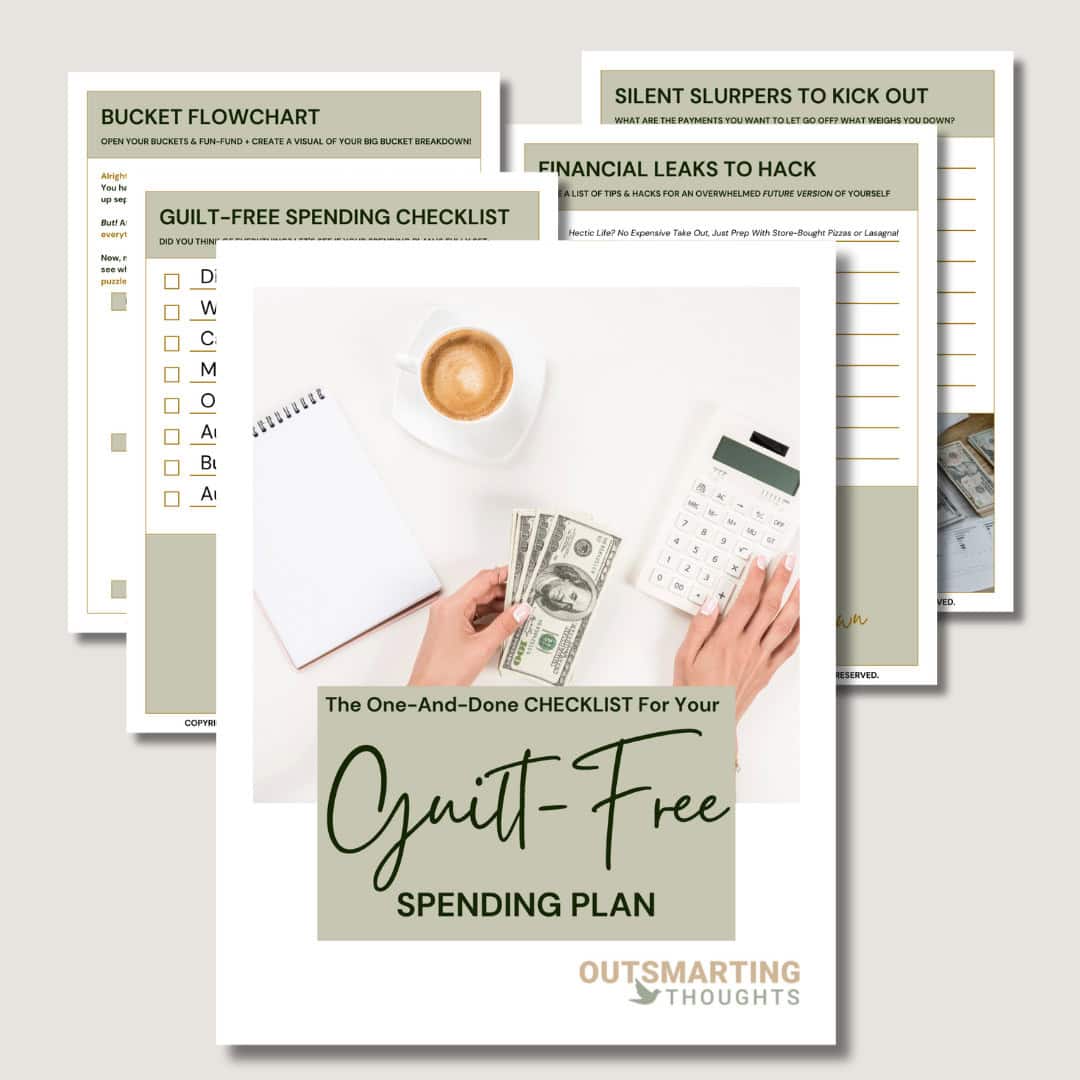Wanna know how to make an impulse purchase work in your favor instead of wrecking your budget? This post is dedicated to showing you exactly how to flip the script on splurging so it fuels your life instead of draining it.
You know the scene: your card’s in your hand, the flush of excitement is real, and you’ve already convinced yourself this thing is a need. But then, somewhere afterwards, reality hits. Your bank account feels the punch, your pride stings, and you tell yourself you’ll “do better” next time. Yet here you are, inevitably, riding the same rollercoaster again. You crave control, but without a practical system, your emotions win. Every. Darn. Time.
What you’re going to learn is how to climb the four levels of financial mastery using the 4 levels of competence model (often used in educational psychology). From the chaos of unconscious splurging to the freedom of effortless intentional spending, you’ll see exactly how to turn every purchase into something that resonates & aligns with you.
After you have learned to manage impulse purchases like a pro, you’ll feel more in control, financially independent, and able to use money as a tool for building the life you want. Because after all, that’s what it should do.
This post is all about transforming an impulse purchase into self-control so you can stop half-assing your financial life and start playing full-out.
Impulse Purchase
Let’s explore the overlap between ‘a simple impulse purchase‘ & the 4 levels of competence. Because in it, I believe we can also find a flip of the script, and use this to our advantage.
Level 1 is unconscious incompetence: you buy without thinking and kinda don’t even notice the damage. Then comes level 2, conscious incompetence: you know you’re out of control, but the pull of instant gratification still wins. At least, in this level, you’ve started trying to get a grip. And then, you slowly move yourself to the third level, conscious competence, where you finally get to flex self-control. It’s where you catch yourself before buying, you align your spending with your actual goals, and yes, you can still buy whatever you want if it aligns.
Finally, at the last level, number 4, unconscious competence is the financial sweet spot: intentional spending becomes automatic. You don’t fight urges; you simply filter purchases like a CEO reviewing monthly reports. The process turns you from an emotional spender into someone who owns their financial story. Not because you have to, but because you refuse to half-ass your one shot at life.
Step 1: Unconscious Incompetence — The Raw Impulse Buy Stage
Impulse purchases at this stage are pure autopilot. You’re chasing a high, filling a gap, or rewarding yourself without a plan. You don’t even realize how often you’re doing it because it feels harmless in the moment. That new bag, the online checkout binge, the late-night “add to cart” session; they all masquerade as quick fixes for stress, boredom, or self-doubt. But when you observe the pattern more deeply, it’s way more about avoiding emotional distress than “needing” the item.
The marketing world cashes in on you staying here. Flash sales, urgency timers, and those only 3 left in stock pop-ups exist to keep you small, reactive, and financially sloppy. You’re playing right into a system designed for you to lose.
RELATED POST:
How To Pull Yourself Out Of Financial Denial: An Overachiever’s Strategy To Get Back In Control
At this stage, the damage is hidden. You’re unaware of how much emotional spending hijacks your bigger goals. That’s why it feels like money is “just disappearing.” You’re not measuring, nor tracking. You’re not connecting the dots between your spending habits and your life trajectory.
The first rebellious move is awareness. Not judgment, not shame—awareness. Track your next ten impulse buys. Write down why you bought them, what you were feeling before, and how you felt after. You’re not here to punish yourself. You’re here to start spotting patterns like a detective. Because until you catch yourself in the act, you can’t pull the brakes.
You can’t skip this stage. But you can refuse to stay here.
Step 2: Conscious Incompetence — The “I Know I’m Out of Control” Phase
This is where the sting hits. You start to notice the trail of receipts and the dent in your bank balance. You’re painfully aware you’re not in control, but knowing doesn’t make it easier. The emotional pull is still there, strong as ever, whispering that you deserve this. And you probably do—but not at the cost of sabotaging your future.
You might try quick-fix rules like “no spending for a month” or deleting shopping apps, but without a deeper shift, the relief doesn’t last. The truth is, your brain has been trained to associate buying with emotional relief. Every impulse purchase feels like it solves a problem, even when it creates a bigger one.
This stage isn’t failure. It’s progress. You’re seeing the mess for what it is, and that sight alone is powerful. Awareness gives you the leverage to start building structure around your emotions. Your next step isn’t perfection—it’s preparation. Learning how to slow down the moment between wanting something and actually buying it is your first real tool for change.
Owning a cashflow strategy is a skill that’ll give you some serious advantages in life. I think budgeting is an aligned action with taking life seriously, and I seriously believe life will reward you for it. If you’re not into high-maintenance strategies like ‘tracking your spending’ and just want to sit down ONCE to direct your financial future, our Guilt-Free Spending Plan Printable is the right cashflow strategy for you! Don’t let anybody outsmart you out of your own money and start budgeting today by simply filling out the form below:

Want a free
ONE-AND-DONE CHECKLIST for aGUILT-FREE SPENDING PLAN? Free up your bandwidth and stop overthinking with this
FREE One-And-Done Checklist for your Guilt-Free Spending Plan!
Simply fill out the form below to get this strategy
delivered straight to your inbox!
Step 3: Conscious Competence — Mastering Self-Control in Real Time
Now you’re in the driver’s seat. You still feel the pull of an impulse purchase, but you can pause long enough to make a decision instead of a reaction. This stage is all about building friction into your spending. You check your budget before hitting checkout & give yourself 24 hours before buying. You ask yourself if the item actually resonates & aligns with your bigger life plan.
It’s not about saying no to everything. It’s about saying yes strategically. You start filtering purchases like you’re running quality control for your own life. If it’s going to enhance your day-to-day experience or move you toward a meaningful goal, it gets the green light. If not, it waits.
RELATED POST:
Intentional Spending: The CEO-Mindset And AntiDote Against Overspending & Impulse Buying
The practical tools here are simple but powerful. Use a spending tracker. Keep a running “want list” and revisit it weekly. Tie purchases to actual milestones so every buy feels earned and celebrated instead of impulsive. It’s the same shift an athlete makes when they train with intention instead of just “working out” whenever they feel like it.
You’re actively rewiring your brain to associate spending with strategy instead of emotion. The more you practice, the less effort it takes. And the better you get, the more freedom you have to spend without regret.
Step 4: Unconscious Competence — Intentional Spending by Default
This is the dream stage. Managing your money feels as natural as brushing your teeth. You don’t have to fight urges or wrestle with guilt because every purchase is already filtered through a mental checklist you barely notice yourself running.
At this level, impulse purchases don’t disappear. They just stop being destructive. You can grab something on a whim because you know your financial foundation is solid. The bills are paid, savings are on track, and your budget flexes for joy without cracking under pressure.
It’s the financial equivalent of a CEO reviewing monthly reports. You already know the numbers, so your decisions are fast, confident, and aligned. This isn’t about restriction—it’s about freedom. Freedom to spend without fear & to say yes without checking over your shoulder. Freedom to live like you’re in charge, because you are.
Getting here takes repetition, not perfection. The daily practice of pausing, questioning, and aligning your spending becomes second nature. You’re not chasing the high of a purchase anymore. You’re building a life where money works for you, not against you.
When you reach this point, you’re not “done” with growth—but you’ve hit a level where half-assing is no longer an option. You’re here to play full-out, and your bank account finally proves it.
Impulse Purchase (Summary)
The psychology behind an impulse purchase fits perfectly with the 4 levels of competence: from blind emotional spending to automatic intentional buying. Each stage is a rung on the ladder toward financial self-mastery.
The key strategies from this post are: tracking your patterns without judgment, slowing down the decision-making window, filtering purchases through your bigger life plan, and practicing until alignment is second nature.
Picture your future self a year from now: making purchases with zero guilt, knowing your finances are handled, and enjoying every buy because it truly fits your life. That’s not a fantasy—it’s what happens when you decide to climb the ladder instead of staying stuck at the bottom.
I wish you the absolute best as you take the first step—and I’m cheering you on to go make those purchases count for something bigger.
This post was all about transforming an impulse purchase into self-control so you can stop half-assing your financial life and start playing full-out.
We aim to help you out as much as possible, but please keep in mind that the content is only for general informational and educational purposes. We offer our services based on independent research and life-experience only, and so our strategies can never serve as a substitute for professional advice. Trust me, we do not have 'everything figured out', are all still huge works in progress, but hey, what works for us, might work for you too! This is allll up for you to decide... It might not work for you, and that's okay, so cherrypick the stuff that resonates and leave the stuff that doesn't, and let's go!








